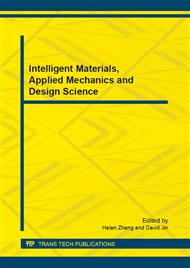p.138
p.142
p.152
p.157
p.161
p.165
p.169
p.175
p.180
Reduction Feature and Selection Principle of Chromium Ore for Stainless Steelmaking in a Smelting Reduction Converter
Abstract:
This paper starts with the mineral structure, reducing properties of chromium ore and the physical and chemical properties of chromium oxide and discusses the requirements of the chemical composition of chromite and confirms the selection principle of chromium ore and reducing agent of chromium ore smelting reduction. The chemical compositions of the available chromite request the relatively high contents of chromium and iron, the lower contents of Al2O3, MgO and P in gangue and the lower Cr/Fe ratio in keeping with the case of high chromium. Chromoium ore in South Africa is considered to be suitable for smelting stainless steel crude melts in a smelting reduction converter. From the reducing power and economy angle, carbon as a reducing agent is more suited to reducing chromium ore.
Info:
Periodical:
Pages:
161-164
Citation:
Online since:
November 2011
Authors:
Price:
Сopyright:
© 2012 Trans Tech Publications Ltd. All Rights Reserved
Share:
Citation:


